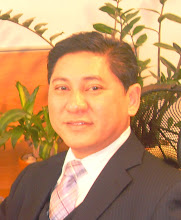A Culture of High Expectations
To me, leadership is about the culture you create. My culture is one of high expectations from an activity standpoint. I’ve always believed in high activity and high standards. As a new financial rep, early on, I was high-life, high-activity person. That’s what I believe in. I got that from Al Granum
In 2001, I took over an organization that was not high-activity-oriented and didn’t focus on high-lives production. I spent the first year on the soapbox talking about activity with every new recruit and prospect I had. The people here were in their own groove and resisted it. The first year was awful.
I found out the hard way that you should never relax your standards.
As a new managing partner, when your name is suddenly on the door, even if you’re successful, fear and self-doubt can set in and make you do things you wouldn’t normally do.
I had spent nine years recruiting and developing people in the Hoopis Agency, a phenomenal organization. I was extremely selective about the people I hired and had tremendous success. Tremendous!
But the minute I walked out of there, knowing that now it was all on me, self-doubt set in.
My logic got out of whack because, guess what? Panic is too strong a word, maybe, but I wasn’t nearly as selective as I should have been. I needed to get recruits in here, the momentum of some new blood. I needed to show the organization that I could get new people on board. When that’s the mindset, you’re willing to accept less of candidates. So the 20 I recruited in my first year weren’t even close to the mark.
Within six months, 18 of my 20 hires were gone. It was a huge financial commitment and wasted effort. A 10 percent retention rate isn’t going to cut it. If my retention is 20 percent, I won’t make a profit for seven years. If it’s at the industry average, which is 11 percent, I will never make a profit. I had cash flow in that first year, but I wasn’t profitable.
During my second year, my emotional controls relaxed a little and my logical controls took over, so I began to be more selective again. But it meant that I had to increase the number of people I interviewed.
I learned my lesson. I’m back to setting expectations and enforcing them, and that is part of our culture. Our mandate in my firm today is that we do 50 first interviews every month. We will have 600 first interviews this year. From those 600, we will recruit 18. The GAMA Foundation study [Agency Recruiting & Selection Practices] says that 20 interviews to 1 hire is what the most productive agencies do, and the less productive agencies do 10 to 1. I’m using 30 to 1, so it does take me longer.
My recruits have to adhere to a strict standard of productivity, too. They have to sell 20 lives or $20,000 of premium in their first six months, or we shake hands. I had a young man who came to me and had 17 lives and $18,976 of premium. He said, “I’ve got $22,000 of premium that I’m waiting to put in.” I terminated him. We had an agreement. We had talked about this all along. I know that the retention rate for someone who makes less than 20 sales in their first six months is not acceptable, so I held to that standard. My retention rate has dramatically improved.
I would advise any new managing partner to be patient. When you’re building your organization, either hire additional recruiting units or wait for the right people¾but do not compromise your standard.
Brian H. Early, CLU ChFC
Managing Partner
Northwestern Mutual Financial Network
Wayne, PA
GAMA International Board of Directors
Tuesday, October 7, 2008
Subscribe to:
Post Comments (Atom)

No comments:
Post a Comment